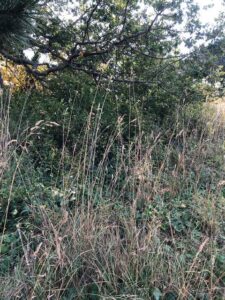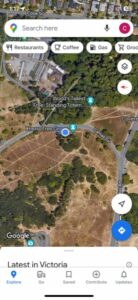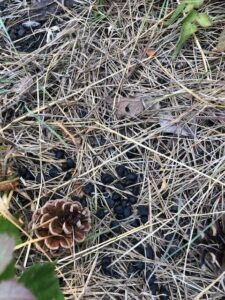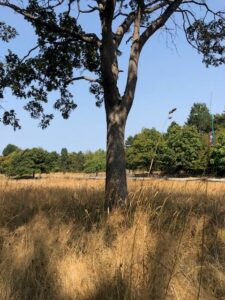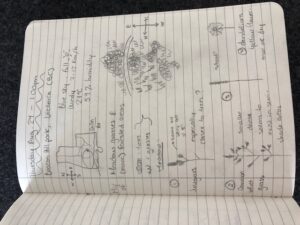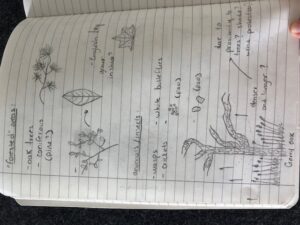I decided to conduct my research at Beacon Hill Park, in Victoria (BC), once part of the land occupied by the Lekwungen peoples and today represented by the Songhees and Xwsepsum Nations.
Beacon Hill Park extends on roughly 740,000 square meters and is characterized by different types of native, exotic, and mixed ecosystems, such as grassland, Garry oak woods, Douglas-fir woods, shrubs, and others. The topography varies within the park; there are areas where it’s mostly flat, there are gentle slopes, and two small lakes (Goodacre and Circle Drive). The Beacon Hill itself has an elevation of about 30m compared to the rest of the terrain.
Since the park is so big I wanted to narrow down my study to a smaller area, which is why I chose to do my observations in the area delimited in red in the picture below. This area covers approximately 250m x 250m (0.06 acres), and is situated just north of Dallas road at a few hundred meters from the Salish Sea.
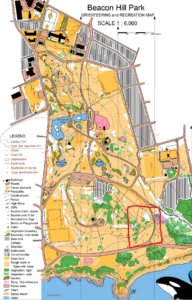 .
.
I made my observations on Thursday Aug. 24, 2023 (end of summer), between 1 and 3:30 pm. Full sun (about 15% cloud coverage), 21 degrees Celsius, 60% humidity with winds of 7-12 km/h.
In this section of the park, the two main vegetation types that are present are meadow grasses and Garry Oak ecosystems. In the meadow area, junegrass (Koeleria macrantha), common velvet grass (Holcus lanatus), dandelions (Taraxacum) -mostly dry-, camas (Camassia quamash), and a tall, erected grass that looks like pithy sword-sedge (Lepidosperma longitudinale) (not 100% sure if I correctly identified it) can be found. As for the (more) forested area, Garry oak trees (Quercus garryana) are clearly dominant, but we can find Austrian pines (Pinus nigra) and Elm trees in large numbers too. There is lots of English Ivy (Hedera helix) as well, especially along the paths, from what I can see. Throughout the area, I observed wasps, crickets, butterflies, and deer scat.
Some of the questions that arose during my observations include:
- Why does the pithy sword-sedge seem to grow higher and more dense when it’s closer to trees? Could this be due to the shade/wind protection that trees provide? For example, there is an oak tree in the middle of the meadow and the pithy sword-sedge-type grasses are very dense around the tree and high, and their density and height seems to reduce as we get farther from the tree (see photos).
- Does human disturbance (tramping) change the distribution of the different types of grasses found in the area?
- What is the distribution and abundance of Garry oaks in relation with their exposure to direct sunlight and/or wind?
